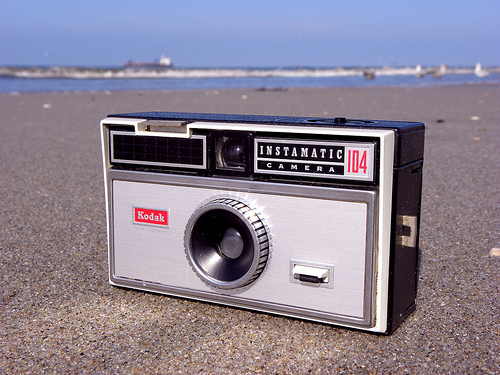
photo credit: joost j. bakker
Kodak used to be King of Cameraland, but then the digital boom destroyed the darkroom. What happens to a successful company when its industry all but disappears?
- As the end of the film camera approached, Kodak changed its focus to digital technology and printers. But it’s been a long, hard road.
- Kodak products aren’t flying off the shelves these days, but the company does have one huge thing going for it: It owns more than 1,000 patents on digital imaging technology.
- Kodak technology is behind almost all digital cameras produced today – including iPhones and Blackberries.
- That’s no small thing, so Kodak has been fighting hard for its share of digital imaging profits. It’s currently suing Apple and Research in Motion (which makes the Blackberry) over alleged patent infringement.
- The U.S. International Trade Commission just ruled that Apple and Research in Motion did not violate any patents, but Kodak is going to keep fighting. What else can it do?
Facts & Figures
- The Eastman Kodak Co. is 130 years old
- Kodak has successfully negotiated $550 million in royalties from Samsung and $414 million from LG Electronics
Best Quote
“We fully expect the ITC commission will ultimately rule that the patent claim at issue is valid and infringed by Apple and RIM.” – Laura Quatela, Kodak’s chief intellectual property officer
What do you think?
Can you think of any old giants like Kodak that have reinvented themselves to be successful today?

